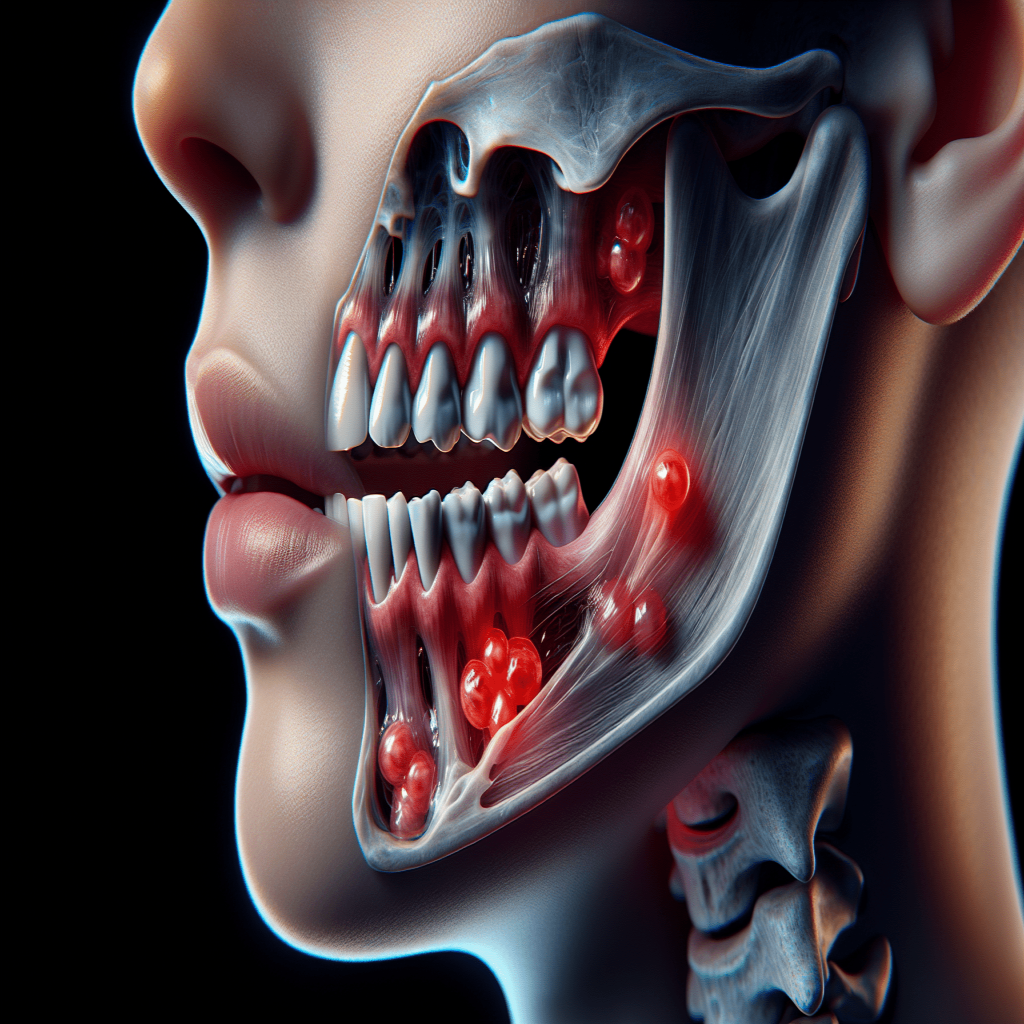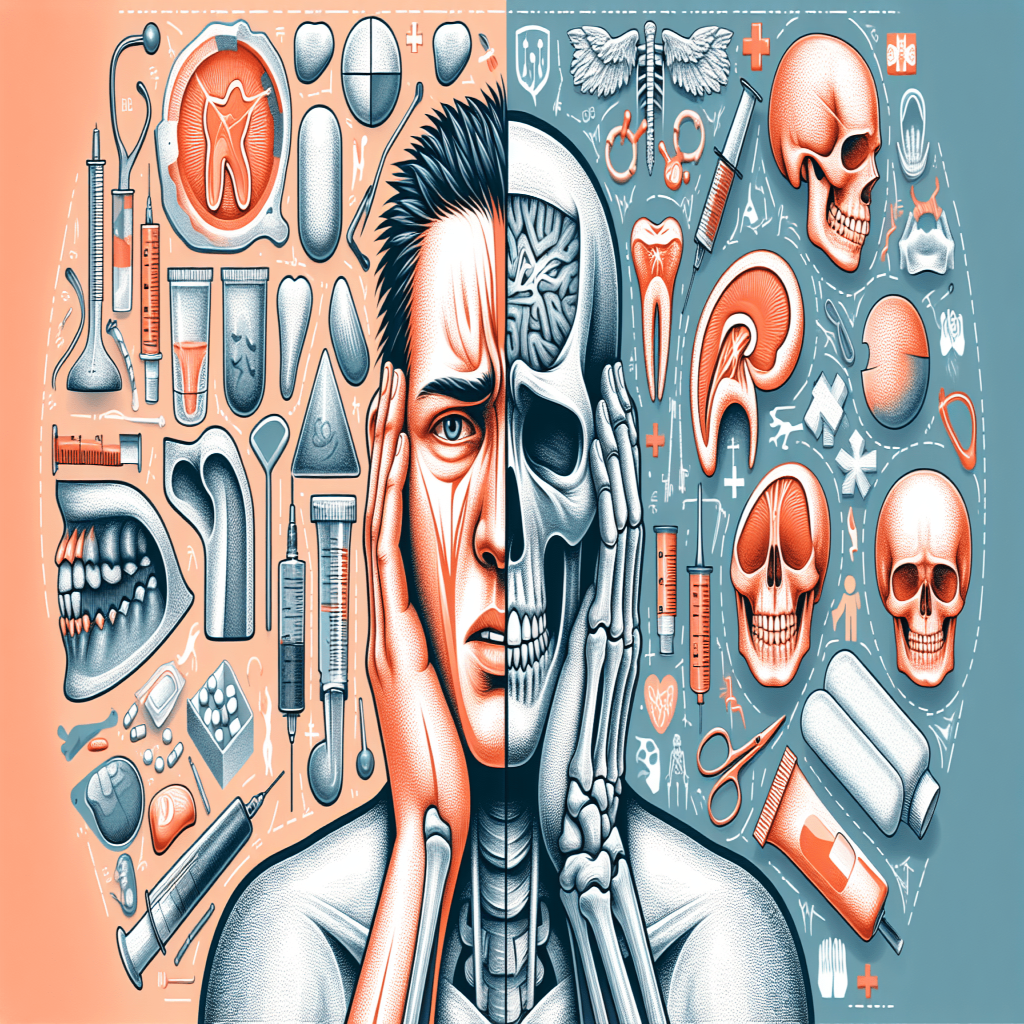You’re not alone if you’ve been experiencing discomfort or pain in your TM joint. TM joint disorders can be a common source of discomfort, affecting individuals of all ages. However, understanding the causes and available treatment options can help bring relief and improve your overall quality of life. In this article, we’ll explore the ins and outs of TM joint disorders, providing valuable insights into their causes and effective treatments. So, get ready to regain control over your TM joint health and discover the renewed comfort you deserve.

Overview of TM Joint Disorders
TM Joint Disorders, also known as temporomandibular joint disorders, refer to a group of conditions that affect the temporomandibular joint, which is the joint connecting the jawbone to the skull. These disorders can lead to pain, discomfort, and dysfunction in the jaw joint, affecting daily activities such as eating, speaking, and even sleeping. Understanding the causes, symptoms, and treatment options for TM Joint Disorders is crucial for those affected by this condition.
Definition of TM Joint Disorders
TM Joint Disorders encompass various conditions that affect the temporomandibular joint, including temporomandibular joint dysfunction, osteoarthritis, and internal derangement. Temporomandibular joint dysfunction refers to a condition in which there is dysfunction or misalignment of the temporomandibular joint, leading to pain and limited jaw movement. Osteoarthritis of the temporomandibular joint involves the breakdown of the joint’s cartilage, causing pain and inflammation. Internal derangement refers to a condition in which the disc inside the temporomandibular joint is displaced or damaged, resulting in pain and jaw clicking or popping.
Causes of TM Joint Disorders
There are several factors that can contribute to the development of TM Joint Disorders. These include:
- Jaw injury: Trauma to the jaw, such as a blow or impact, can damage the temporomandibular joint and lead to the development of TM Joint Disorders.
- Bruxism: Teeth grinding and clenching, known as bruxism, can place excessive pressure on the temporomandibular joint and contribute to its dysfunction.
- Arthritis: Certain types of arthritis, such as rheumatoid arthritis and osteoarthritis, can affect the temporomandibular joint and lead to TM Joint Disorders.
- Malocclusion: Misalignment of the teeth and jaw, known as malocclusion, can cause uneven pressure on the temporomandibular joint, leading to its dysfunction.
- Stress: Chronic stress and tension can contribute to the development of TM Joint Disorders, as it can lead to increased clenching of the jaw muscles.
- Genetics: There may be a genetic predisposition to developing TM Joint Disorders, as certain genetic factors can contribute to the condition.
Common Symptoms of TM Joint Disorders
TM Joint Disorders can present with a variety of symptoms. It is important to note that not all individuals will experience the same symptoms, and the severity can vary. Common symptoms of TM Joint Disorders include:
- Jaw pain or discomfort, which may be localized to the joint itself or radiate to the surrounding areas such as the ear or temple.
- Jaw clicking, popping, or grinding sounds when opening or closing the mouth.
- Limited range of motion in the jaw, making it difficult to open or close the mouth fully.
- Lockjaw, where the jaw gets stuck in an open or closed position temporarily.
- Headaches, particularly in the temple area or around the temples.
- Earaches or ear pain, which may be mistaken for an ear infection.
- Facial pain or tenderness, especially in the jaw or cheek area.
- Difficulty chewing or biting, as well as discomfort while eating.
- TM Joint Disorders can also cause neck and shoulder pain, as the muscles in these areas can become strained due to jaw dysfunction.
Diagnosis of TM Joint Disorders
To diagnose TM Joint Disorders, a comprehensive evaluation is necessary. The diagnosis typically involves a combination of medical history, physical examination, and imaging techniques. Additionally, specialized tests may be conducted to provide further insight into the condition.
Medical History and Physical Examination
During the medical history assessment, your healthcare provider will inquire about your symptoms, the duration and intensity of the symptoms, any previous jaw injuries or surgeries, and any other underlying medical conditions that may contribute to TM Joint Disorders. The physical examination will involve assessing jaw movement, checking for any tenderness or swelling around the jaw joint, and listening for clicks, pops, or grating sounds during jaw movements.
Imaging Techniques for TM Joint Disorders
Imaging techniques such as X-rays, CT scans, and MRI scans may be used to evaluate the temporomandibular joint. These imaging methods allow for detailed visualization of the joint’s structures, including the bones, cartilage, and disc. X-rays provide a basic assessment of the joint’s alignment and changes in the bone structure. CT scans offer more detailed images and can reveal any bony abnormalities. MRI scans are particularly useful in assessing the soft tissues, including the disc and surrounding ligaments.
Specialized Tests for TM Joint Disorders
In some cases, specialized tests may be conducted to evaluate the function and alignment of the temporomandibular joint. These tests can include electromyography (EMG) to assess the activity of the jaw muscles, joint vibration analysis (JVA) to analyze joint sounds during movement, and computed tomography arthrography (CTA) to evaluate the joint’s internal structures and disc position.
Conservative Treatment Options
The first line of treatment for TM Joint Disorders generally involves conservative approaches aimed at reducing pain and improving jaw function. These treatment options are usually non-invasive and can be effective for many individuals.
Pain Medications
Pain medications, such as nonsteroidal anti-inflammatory drugs (NSAIDs) or analgesics, may be prescribed to alleviate the pain associated with TM Joint Disorders. These medications can help reduce inflammation and provide temporary relief from discomfort.
Physical Therapy Exercises
Physical therapy exercises, specifically tailored to the temporomandibular joint, can help improve jaw mobility and strength. These exercises aim to stretch and strengthen the muscles involved in jaw movement, promoting proper alignment and reducing pain.
Use of Oral Appliances
Oral appliances, such as splints or mouthguards, can be used to provide temporary relief and stabilization for the temporomandibular joint. These appliances are custom-made to fit your mouth and can help reduce clenching and grinding, as well as provide support for the jaw joint.
Minimally Invasive Treatments
If conservative treatment options do not provide sufficient relief, minimally invasive treatments may be considered. These procedures are less invasive than surgery and can help manage symptoms and improve jaw function.
Arthrocentesis
Arthrocentesis is a minimally invasive procedure that involves the insertion of needles into the temporomandibular joint to irrigate and flush out any inflammatory byproducts or debris. This procedure can help reduce pain, improve joint mobility, and promote healing.
Injections of Medications
Injecting medications, such as corticosteroids or hyaluronic acid, directly into the temporomandibular joint can provide therapeutic effects. Corticosteroids help reduce inflammation and pain, while hyaluronic acid promotes joint lubrication and cushioning.
Botox Injections
Botox injections can be used to temporarily paralyze specific muscles around the temporomandibular joint, reducing muscle spasms and alleviating pain. These injections can provide relief for individuals with severe muscle tension and limited jaw movement.
Surgical Interventions for TM Joint Disorders
In cases where conservative or minimally invasive treatments do not effectively manage the symptoms of TM Joint Disorders, surgical interventions may be considered. These procedures are typically reserved for severe cases or when other treatment options have been exhausted.
Arthroscopy
Arthroscopy involves the insertion of a small camera and instruments through small incisions in the skin to visualize and treat the temporomandibular joint. This minimally invasive procedure allows for the removal of scar tissue, damaged cartilage, or misplaced disc tissue while sparing surrounding structures.

Open Joint Surgery
Open joint surgery is a more extensive surgical procedure that involves making a larger incision to access the temporomandibular joint. This procedure is typically performed for complex cases requiring extensive reconstruction or disc repositioning.
Joint Replacement
In severe cases of TM Joint Disorders, joint replacement may be considered. This involves replacing the damaged temporomandibular joint with an artificial joint. Joint replacement surgery is usually reserved for individuals with advanced degenerative joint disease or severe structural abnormalities.
Alternative and Complementary Therapies
In addition to conventional treatments, some individuals may seek alternative and complementary therapies to manage the symptoms of TM Joint Disorders. It is important to note that the effectiveness of these therapies may vary, and it is recommended to consult with a healthcare professional before pursuing them.
Acupuncture
Acupuncture involves the insertion of thin needles into specific points on the body to promote healing and pain relief. Some individuals may find acupuncture helpful in reducing jaw pain and muscle tension associated with TM Joint Disorders.
Chiropractic Manipulation
Chiropractic manipulation focuses on adjusting and aligning the spine and other joints to improve overall health and function. Chiropractic care may include manual adjustments and other techniques aimed at reducing pain and restoring proper jaw alignment.
Herbal Remedies
Certain herbal remedies, such as chamomile or lavender, have been traditionally used for their calming and anti-inflammatory properties. These herbs may be consumed in tea form or applied topically as essential oils to help alleviate jaw pain and promote relaxation.
Lifestyle Modifications for TM Joint Disorder Management
In addition to medical treatments and therapies, certain lifestyle modifications can help manage TM Joint Disorders and prevent symptom exacerbation.
Dietary Changes
Avoiding hard or chewy foods that require excessive jaw movement can help reduce strain on the temporomandibular joint. Opting for softer foods, cutting food into smaller pieces, and avoiding excessive biting or chewing can minimize discomfort and promote healing.
Stress Management Techniques
Since stress can exacerbate TM Joint Disorders, incorporating stress management techniques into daily life can be beneficial. These techniques may include deep breathing exercises, meditation, yoga, or engaging in activities that promote relaxation and reduce stress levels.
Sleep Hygiene
Improving sleep hygiene, such as maintaining a regular sleep schedule, creating a comfortable sleep environment, and avoiding stimulating activities before bed, can help reduce jaw clenching and grinding during sleep. Using a supportive pillow can also promote proper alignment of the head and neck to reduce strain on the temporomandibular joint.
Prevention of TM Joint Disorders
While it may not always be possible to prevent TM Joint Disorders, certain measures can reduce the risk or minimize the severity of symptoms.
Maintaining Good Oral Health
Practicing good oral hygiene and regularly visiting the dentist for check-ups and cleanings can help identify early signs of TM Joint Disorders. Addressing any dental issues, such as malocclusion or teeth grinding, promptly can prevent excessive strain on the temporomandibular joint.
Avoiding Excessive Jaw Movements
Avoiding habits such as chewing gum, biting nails, or biting on pen caps can help reduce excessive stress and strain on the temporomandibular joint. Taking frequent breaks while talking or eating can also allow the jaw muscles to rest and prevent overuse.
Using Proper Ergonomics
Maintaining proper posture and ergonomics in daily activities can help prevent unnecessary strain on the temporomandibular joint. This includes sitting and standing with good posture, avoiding cradling phones between the ear and shoulder, and using supportive pillows or chairs that promote proper alignment.
Potential Complications and Long-Term Prognosis
TM Joint Disorders can lead to various complications and have long-term effects if left untreated or if the condition worsens.
Temporomandibular Joint Dysfunction
Untreated TM Joint Disorders can progress to chronic temporomandibular joint dysfunction, leading to ongoing pain, limited jaw movement, and impaired quality of life. Severe dysfunction can significantly impact daily activities, including eating, speaking, and even smiling.
Chronic Pain
Persistent pain and discomfort can take a toll on an individual’s physical and mental well-being. Chronic pain associated with TM Joint Disorders can lead to decreased overall quality of life, impaired sleep, and increased stress levels.
Impaired Eating and Speech
Severe TM Joint Disorders can greatly affect an individual’s ability to eat and speak normally. Eating may become painful or challenging due to limited jaw movement, leading to inadequate nutrition and a negative impact on overall health. Speech may also be affected by difficulty articulating sounds properly.
Latest Research and Future Directions
Ongoing research in the field of TM Joint Disorders is continuously expanding our understanding of the condition and paving the way for new treatment approaches.
Advancements in TM Joint Disorder Diagnosis
Researchers are exploring advanced imaging techniques and diagnostic tools to improve the accuracy and efficiency of diagnosing TM Joint Disorders. These advancements aim to provide more detailed insights into the structural and functional abnormalities of the temporomandibular joint.
Emerging Treatment Modalities
New treatment modalities, such as regenerative medicine and targeted drug therapies, are being investigated for their potential in promoting tissue regeneration and reducing inflammation in the temporomandibular joint. These advancements may offer alternative options for individuals who do not respond to traditional treatments.
Genetic and Molecular Studies
Genetic and molecular studies are shedding light on the underlying mechanisms and contributing factors of TM Joint Disorders. Understanding the genetic variants and molecular pathways involved in the development of these disorders may lead to personalized treatment approaches in the future.
In conclusion, TM Joint Disorders encompass a range of conditions that can cause pain, discomfort, and dysfunction in the temporomandibular joint. Understanding the causes, symptoms, diagnosis, and treatment options for TM Joint Disorders is essential for effective management and improvement of the condition. From conservative treatments to surgical interventions, there are various options available to alleviate symptoms and restore proper jaw function. Additionally, lifestyle modifications and preventive measures can help minimize the risk and severity of TM Joint Disorders. Ongoing research and emerging advancements offer hope for improved diagnosis, treatment, and long-term prognosis in the field of TM Joint Disorders.




